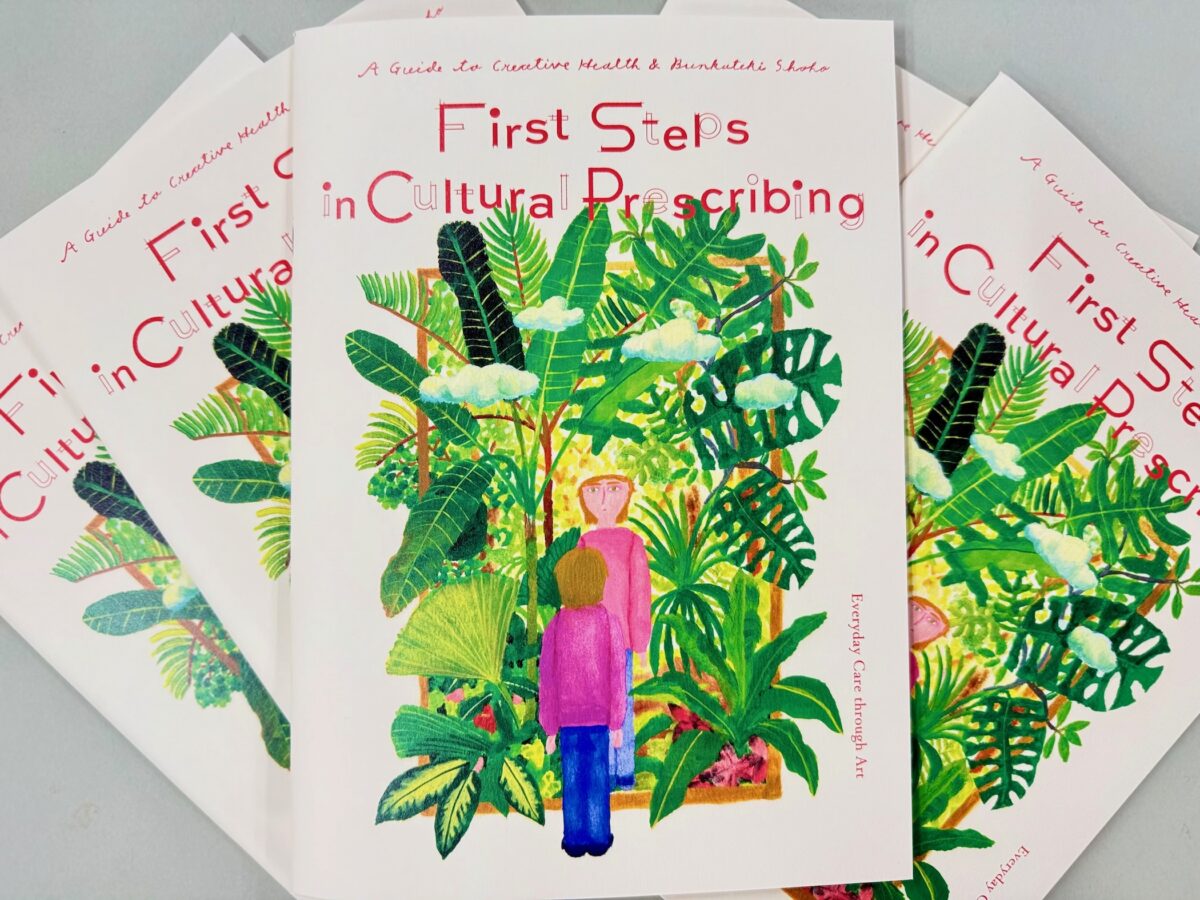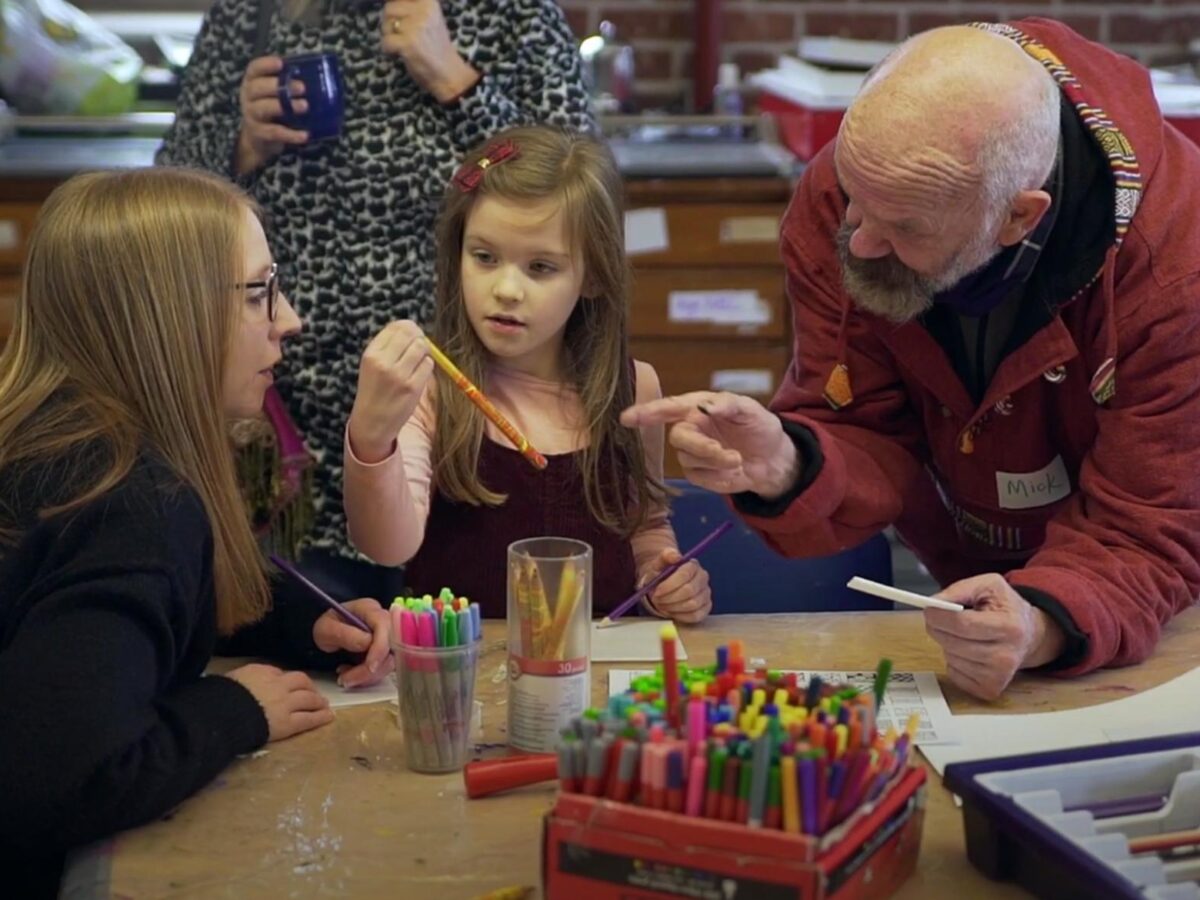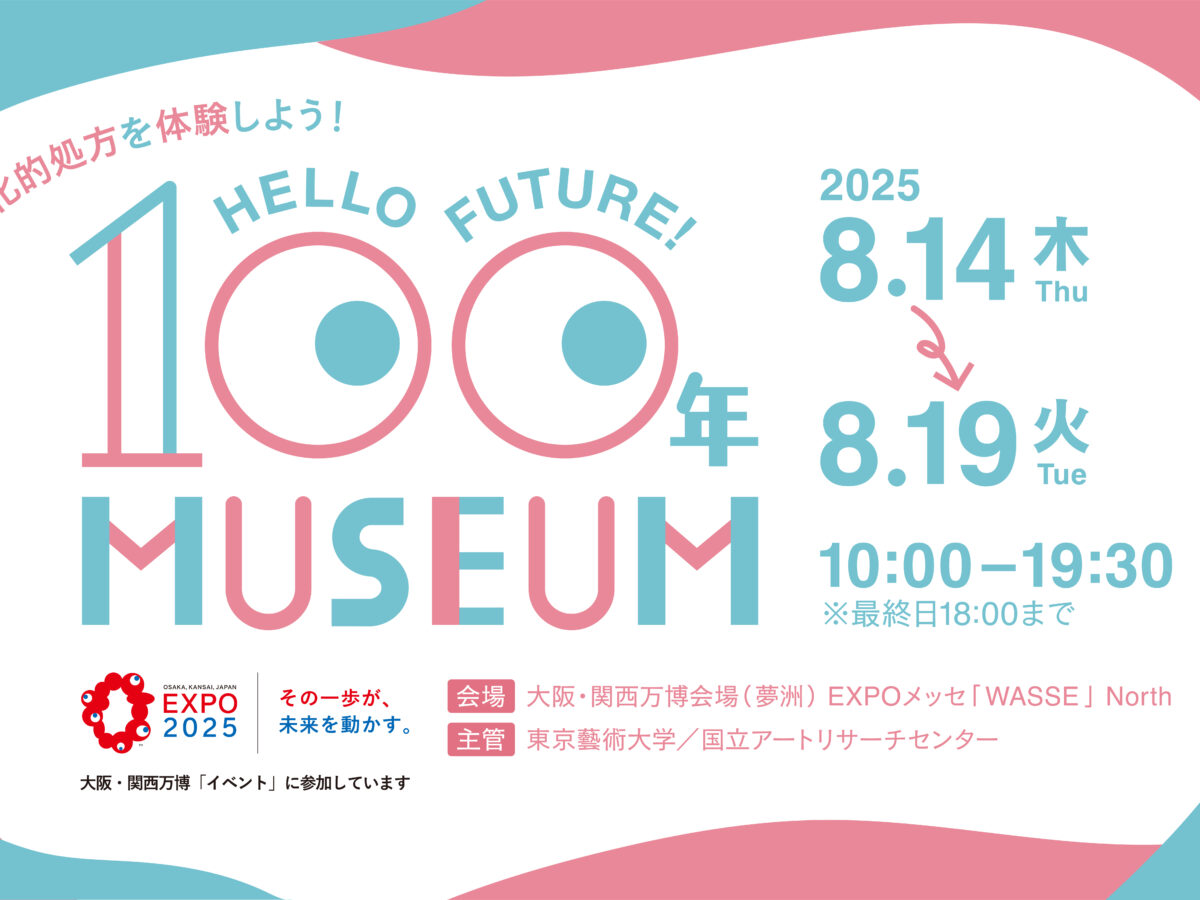 KEYWORD for Cultural Prescribing! "Cultural Prescribing and Social Prescribing" What do they mean?
KEYWORD for Cultural Prescribing! "Cultural Prescribing and Social Prescribing" What do they mean?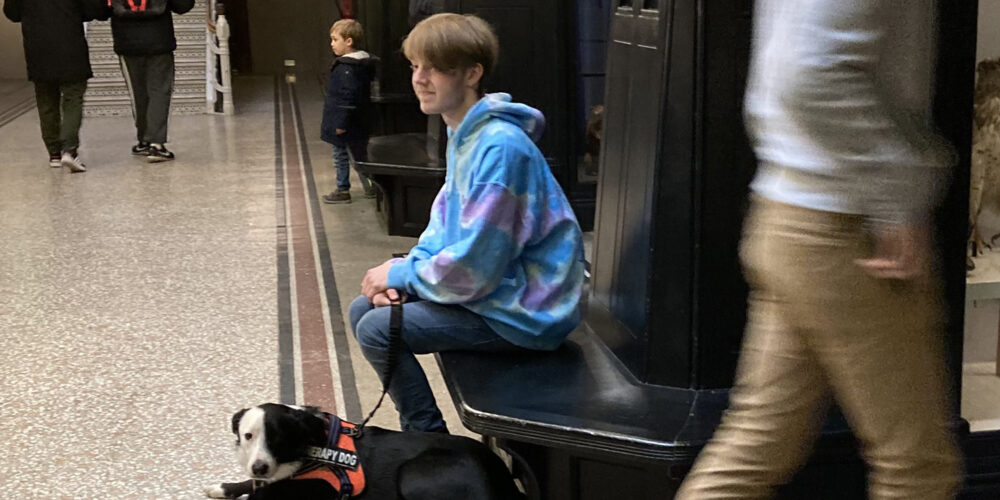
We all experience fluctuations in our mental and physical health. At these times, spending time with “someone” can be a significant help. But whose face comes across to your mind as “someone”? Your close friends, or family? But perhaps that “someone” might not be human.
Therapy dogs are trained to support people for their health and wellbeing through their interactions. It has long been known that engaging with dogs has positive effects on both the mind and body. These days, a variety of research has been conducted on the methodologies and benefits of “Animal Assisted Therapies.” In Japan too, we see more opportunities for therapy dogs to contribute in many places such as elderly care facilities, support facilities for people with disabilities, schools, and hospitals. When your physical or mental state isn’t quite right, therapy dogs are there to spend time with you as a supportive “someone.”
Museums are also beginning to include therapy dogs in their new roles.. Murray, a very popular therapy dog, works at the UK’s Manchester Museum
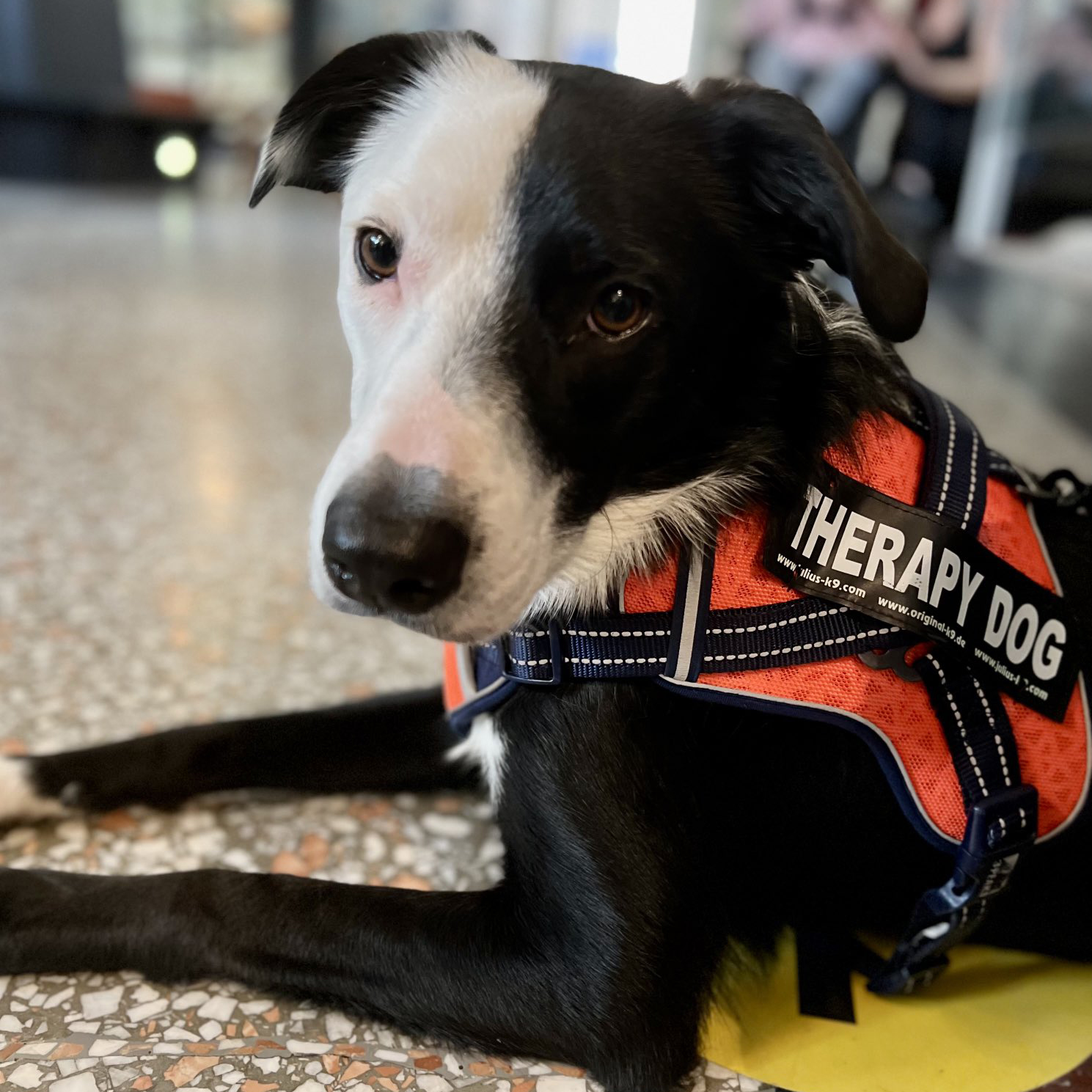
Photo: #MeetMurray @KarenBrackenri4 on X (https://x.com/KarenBrackenri4/)
Murray is a male Border Collie raised by Wendy Gallagher, Head of Civic Engagement and Education, Manchester Museum. Border Collies have a long history as sheep dogs, and are one of the most popular choices as therapy dogs because of their intelligence and excellent communication skills. Wendy found a place in the Museum for Murray to contribute his considerable talents.
Murray’s training took place during the COVID-19 lockdowns, and his presence at the museum has steadily increased since the Museum reopened in 2023 after its redevelopment. Currently, he is getting used to the Museum environment by working with student staff of the University of Manchester. Opportunities for interaction with Murray occur in a range of ways including Museum events. You can see him engaging with visors to the museum on the Museum’s blogs and SNS posts.
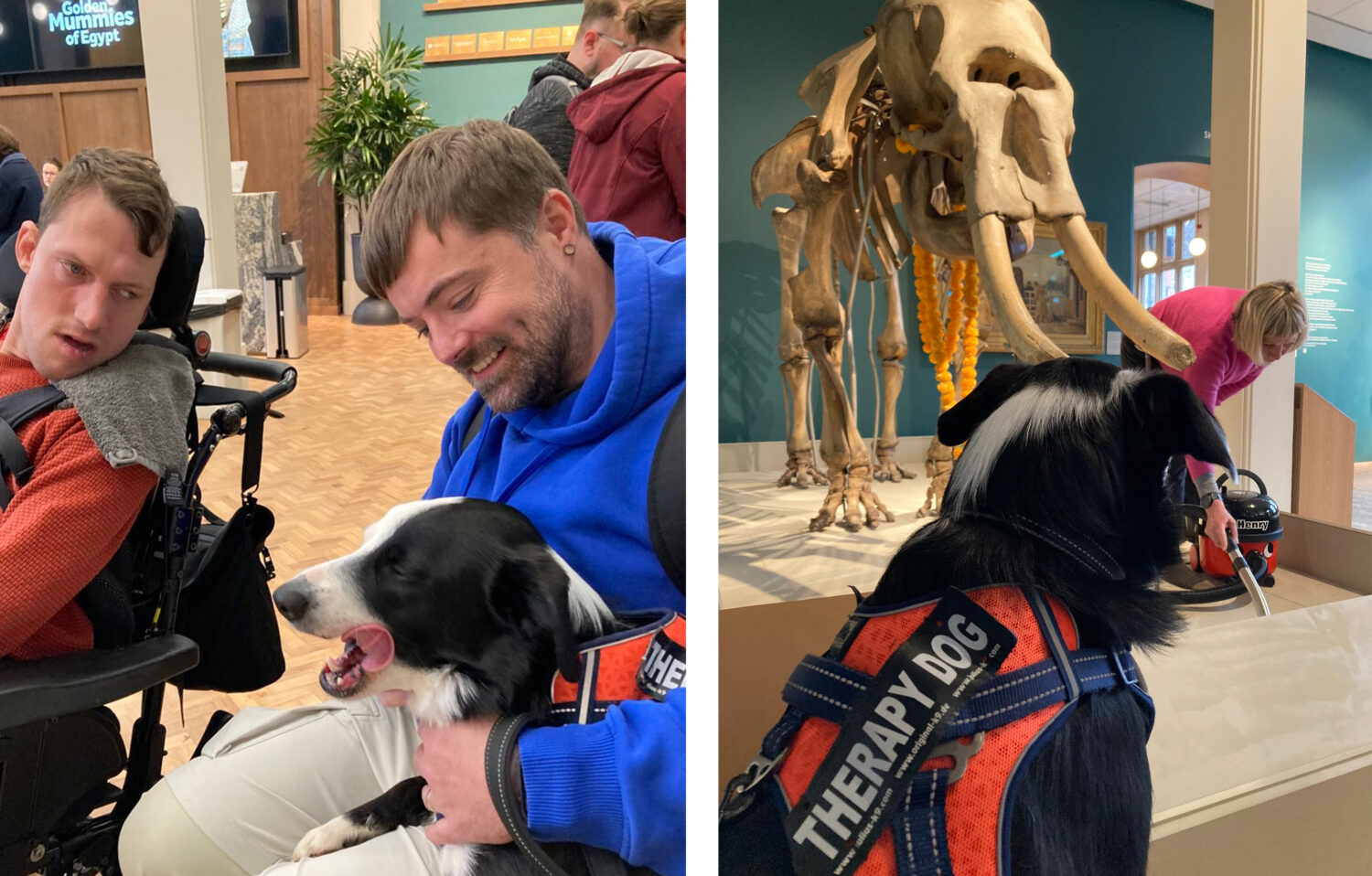
Photos: #MeetMurray(https://x.com/KarenBrackenri4/)
Murray’s activities have been shared through SNS since his training period as a therapy dog, and he quickly became popular and has many followers. The Museum shop stocks a range of his original products. He also appears on the front cover of “Manchester Museum Crinkly Cloth Newspaper,” an original museum product made for for babies.
The presence of Murray suggests the potential for museums to become more approachable and open places for a broader range of people. One reflection of this is in the hashtag “#MeetMurray” used in his social media posts. The phrase “Meet Murray” presents a new way for people to connect with museums.
When you’re feeling down, why not go visit Murray and spend some time with him at the museum? Even without words, Murray’s presence at the Museum could be the motivation for a new way of experiencing the space, triggering new interactions among people, arts, and culture.
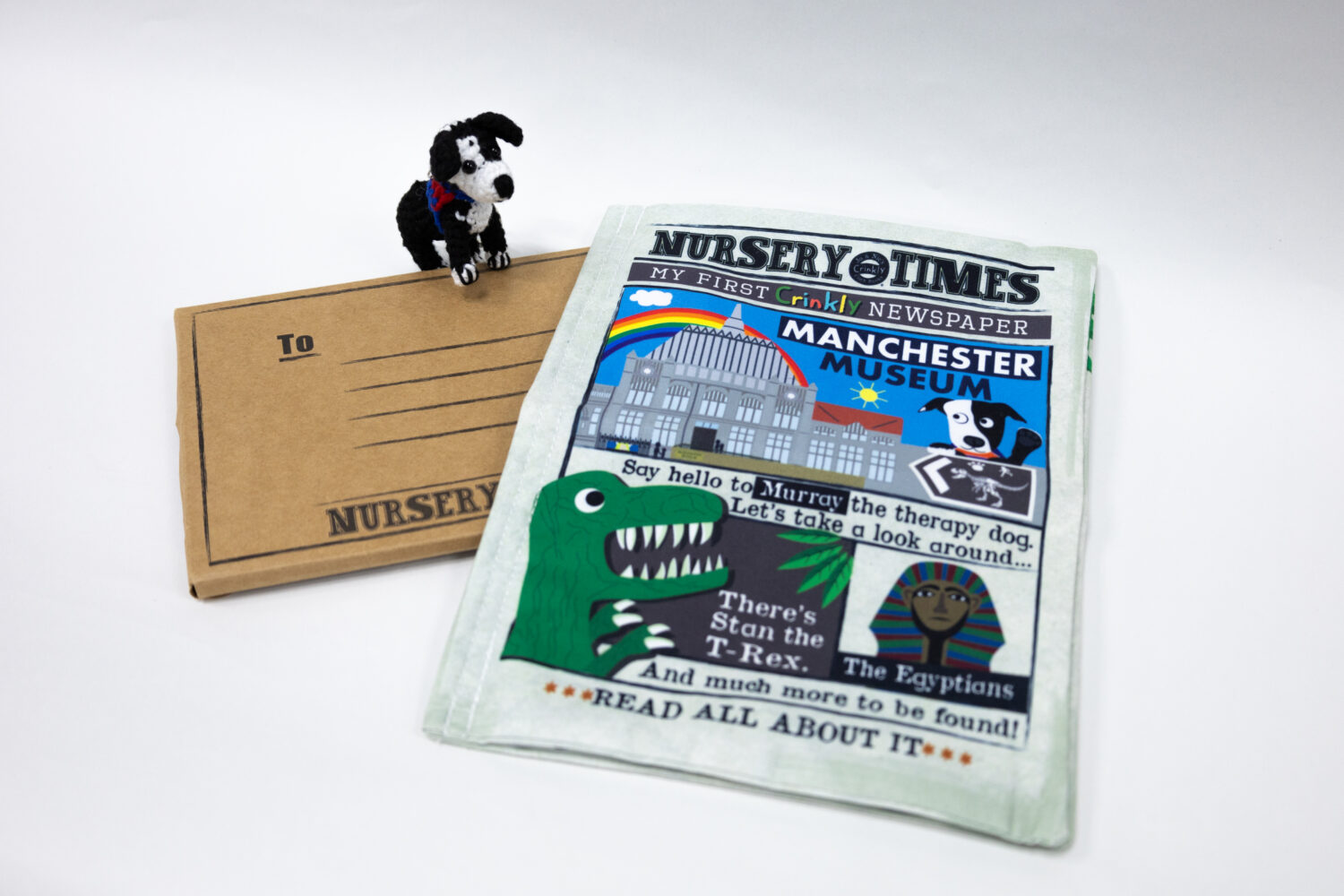
Photo: aa-tomo TODAY Editorial Team
Murray, the therapy dog at Manchester Museum, communicates new chances to connect at the Museum with a wag of his tail!



